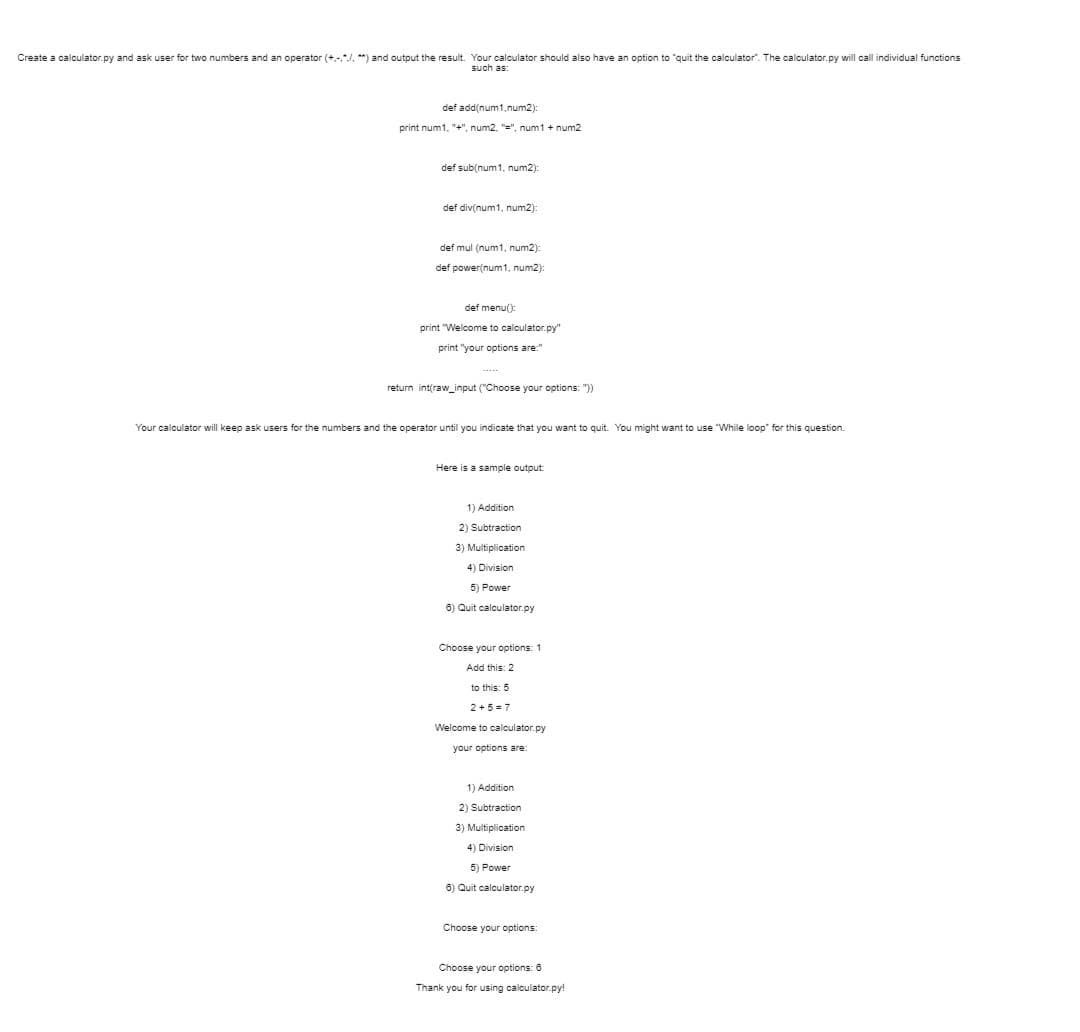Create a calculator.py and ask user for two numbers and an operator (+.-. *) and output the result. Your calculator should also have an option to "quit the calculator". The calculator.py will call individual functions such as: def add(num1.num2): print num1. "+", num2. "=", num 1 + num2 def sub(num1, num2): def div(num1, num2):
Types of Loop
Loops are the elements of programming in which a part of code is repeated a particular number of times. Loop executes the series of statements many times till the conditional statement becomes false.
Loops
Any task which is repeated more than one time is called a loop. Basically, loops can be divided into three types as while, do-while and for loop. There are so many programming languages like C, C++, JAVA, PYTHON, and many more where looping statements can be used for repetitive execution.
While Loop
Loop is a feature in the programming language. It helps us to execute a set of instructions regularly. The block of code executes until some conditions provided within that Loop are true.

Step by step
Solved in 3 steps with 1 images


